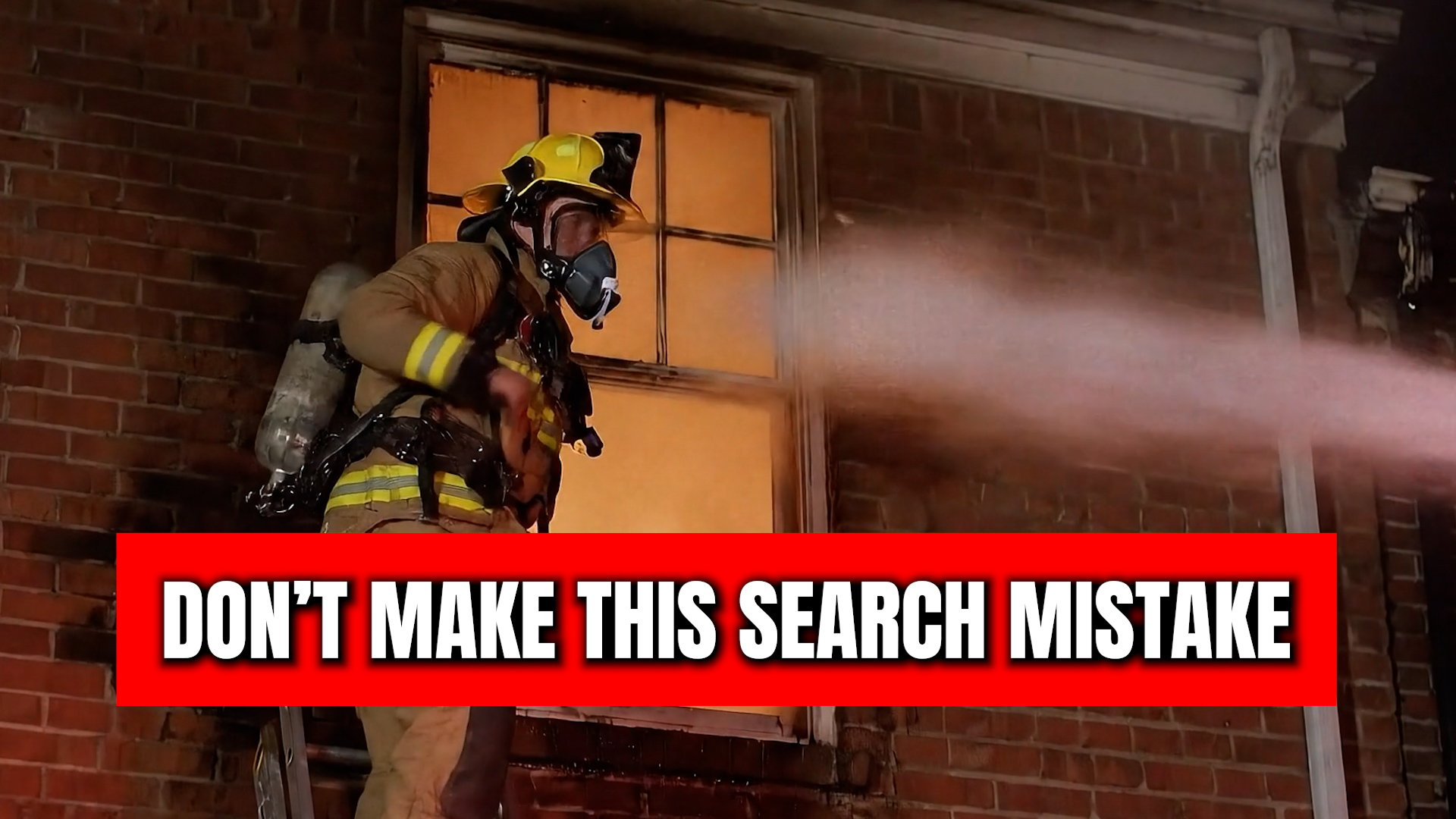Summary: According to Capt. Sean Gray of Cobb County Fire (GA), one of the biggest mistakes during Window-Initiated Search is failing to coordinate with hose streams. A poorly timed water flow can strike a firefighter entering a window, potentially knocking off his/her mask or causing injury. In his view, coordination between search and suppression is crucial—especially when both are happening simultaneously. This moment from Episode 7 of Fully Involved highlights the importance of timing and communication during VES.
In the heat of a fireground, timing is everything—especially when you’re entering a structure through a window. Capt. Sean Gray of Cobb County Fire (GA) makes that point loud and clear in Episode 7 of Fully Involved. In his opinion, one of the most critical errors firefighters can make during VES (Vent-Enter-Search) is not coordinating with hose streams.
Why Coordination With Hose Streams Matters
Gray warns that if suppression crews are flowing water through the same window a firefighter is using to enter, it can lead to serious consequences. As he puts it, getting struck in the face with a hose stream can knock your mask off—and that’s not a scenario anyone wants to deal with inside a burning structure.
His recommendation? Always go in opposite the hose streams and make sure communication between search and suppression teams is dialed in. In his department’s experience, that coordination can make or break a safe entry.
Flood It All at Once: People and Water
Despite the emphasis on coordination, Gray isn’t shy about hitting the fire hard. Once the decision is made, his approach is aggressive: “Flood the building with people and flood the building with water all at the same time.” According to him, they’re not afraid of water, and they don’t hesitate when the situation demands fast, full-on engagement.
It’s a reminder that VES isn’t a delicate dance—it’s a tactic that lives or dies by real-time decisions and communication.
A Thought-Provoking Take for Fireground Tactics
Capt. Gray’s perspective offers a clear takeaway: VES needs coordination to be effective—and safe. Entering opposite hose streams, staying in sync with fire attack crews, and moving with purpose can all help reduce the risk of injury and improve outcomes.
Whether or not this matches your department’s playbook, it’s a conversation worth having. For more of Capt. Gray’s insights, check out Episode 7 of Fully Involved.




Comments